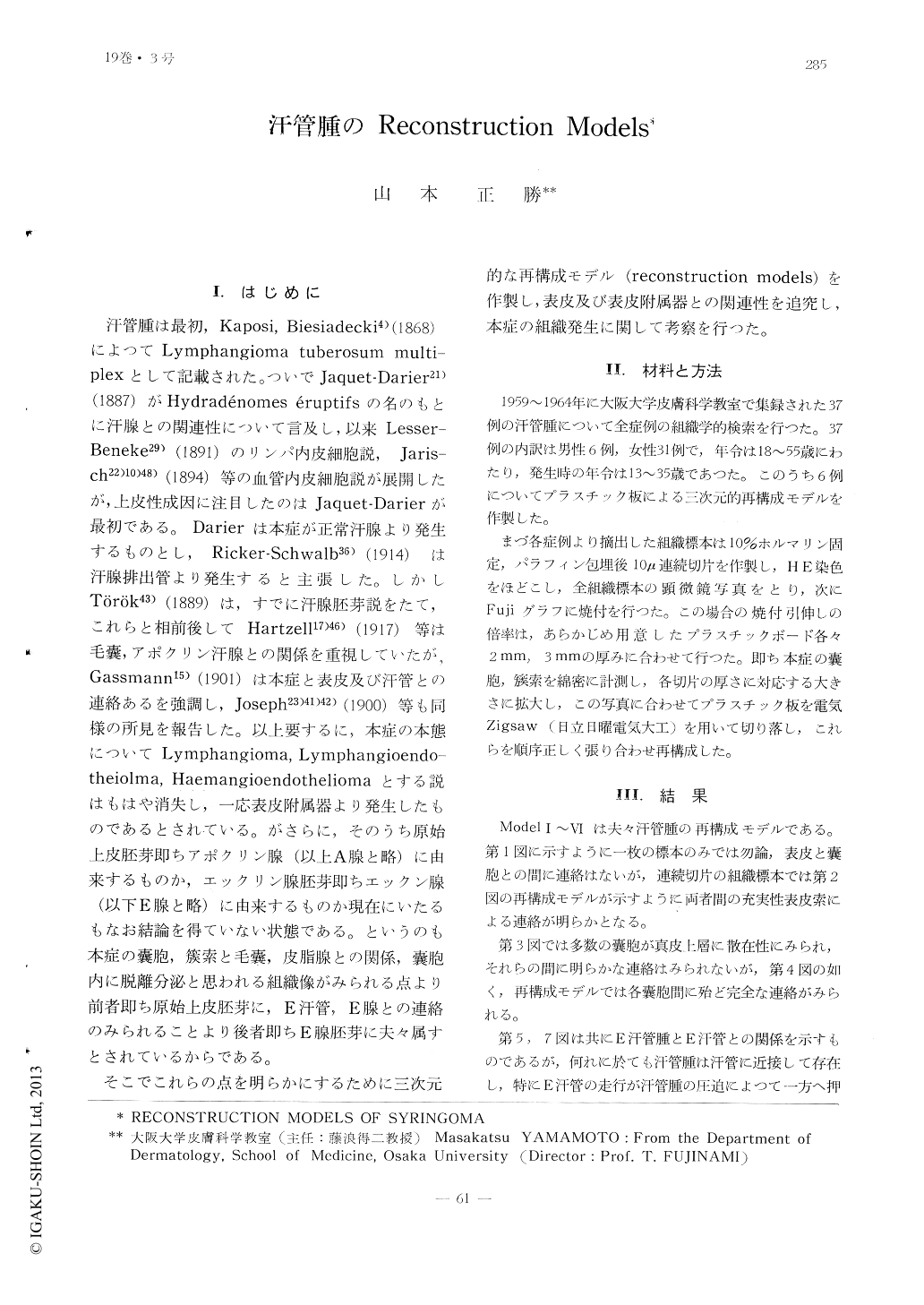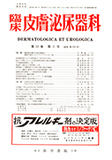Japanese
English
- 有料閲覧
- Abstract 文献概要
- 1ページ目 Look Inside
1.はじめに
汗管腫は最初,Kaposi,Biesiadecki4)(1868)によつてLymphangioma tuberosum multi—plexとして記載された。ついでJaquet-Darier21)(1887)がHydradénomes éruptifsの名のもとに汗腺との関連性について言及し,以来Lesser—Beneke29)(1891)のリンパ内皮細胞説,Jaris—ch22)10)48)(1894)等の血管内皮細胞説が展開したが,上皮性成因に注目したのはJaquet-Darierが最初である。Darierは本症が正常汗腺より発生するものとし,Ricker-Schwalb36)(1914)は汗腺排出管より発生すると主張した。しかしTörök43)(1889)は,すでに汗腺胚芽説をたて,これらと相前後してHartzell17)46)(1917)等は毛嚢,アポクリン汗腺との関係を重視していたが,Gassmann15)(1901)は本症と表皮及び汗管との連絡あるを強調し,Joseph23)41)42)(1900)等も同様の所見を報告した。以上要するに,本症の本態についてLymphangioma,Lymphangioendo—theiolma,Haemangioendotheliomaとする説はもはや消失し,一応表皮附属器より発生したものであるとされている。
Plastic, three-dimensional reconstruction mo-dels were made from cases of syringoma :
1. A syringomatous papule consisted of an interwining connecting nests and strands of epithelial elements, which exhibited features of the eccrine sweat glands.
2. A solid epithelial strand, corresponding to an eccrine sweat duct, was found traversing between the syringoma and the epidermis.
3. No direct connections were observed between the syringoma and the pilosebaceous units or the eccrine sweat ducts.
4. Syringoma was considered representing an eccrine sweat gland adenoma.

Copyright © 1965, Igaku-Shoin Ltd. All rights reserved.


